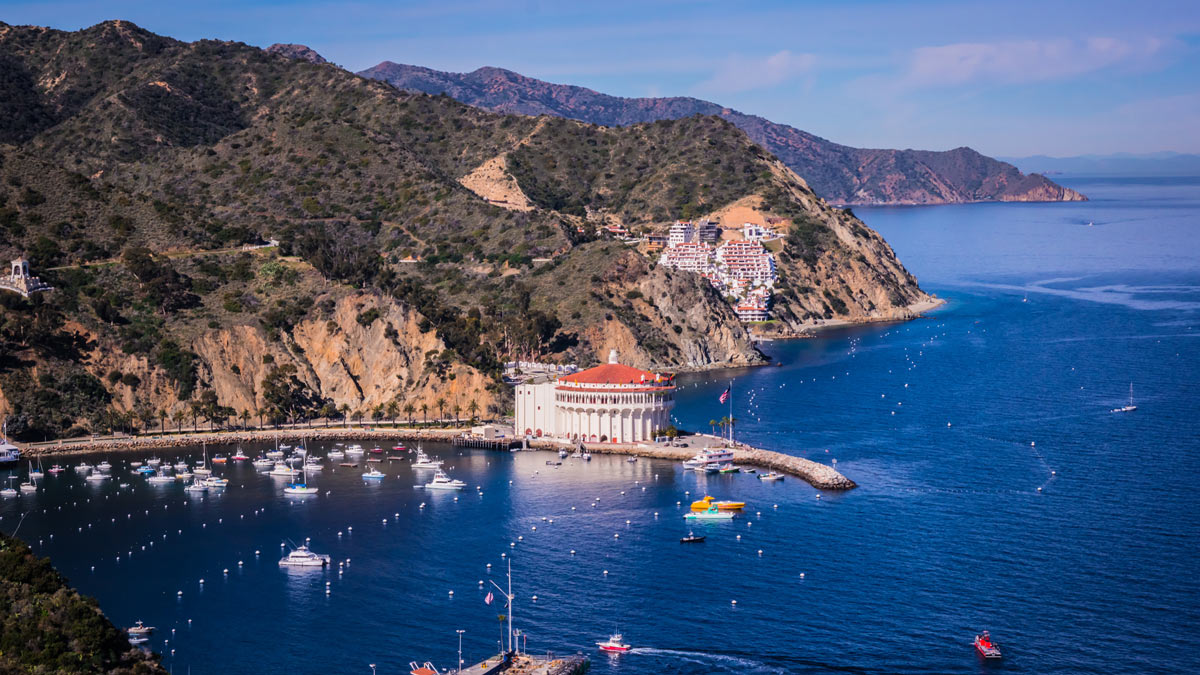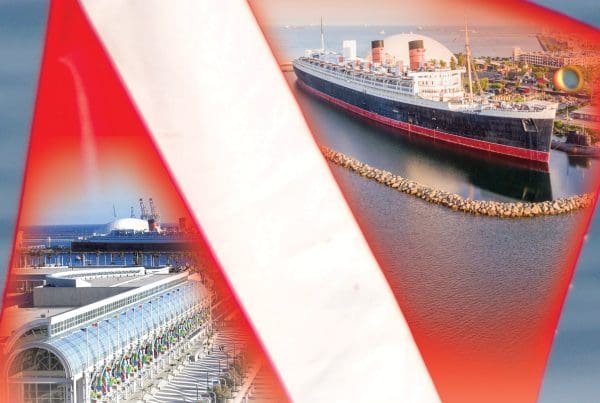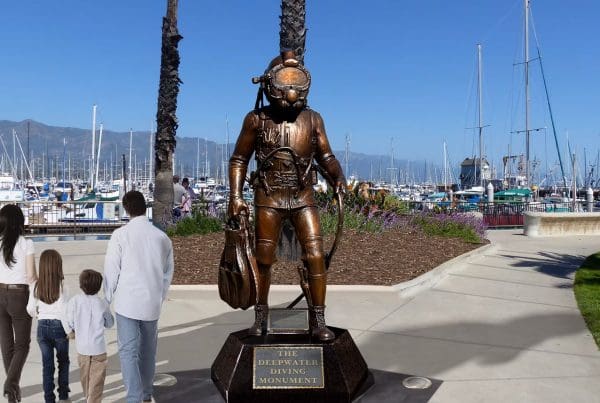When asked by out-of-towners who have never dived California waters where to begin, one of my favorite answers is the Avalon Underwater Park at Casino Point. It is an excellent “sample platter” for those first-time California divers.
Even experienced California divers will find value in visiting — and revisiting — the park. Here are some tips to make your excursions to this underwater treasure even more enjoyable:
Get the map. The new dive store onsite in the Casino building carries laminated cards that serve as an excellent guide to the layout of the bottom of the park. On the flip side of the map, you’ll find a fish identification guide created by Franko Maps. You can also purchase these maps online in advance of your visit. They will give you the highlights of the park — the wrecks, reefs, kelp forests, and, of course, the location of the Cousteau Memorial.
Plan your dives to avoid peak crowds. The park is a very popular location for classes, cruise ship passengers and recreational divers. Crowds are typically highest on weekends, so try to plan your dive for midweek if possible. Mondays and Wednesdays are usually the best days to avoid the crowds from cruise ships. Additionally, diving as early in the morning as possible will help you avoid the busiest times — and increase your chances of getting a coveted bench spot close to the stairs leading to the water.
Make it easy on yourself. First, consider taking a taxi to the park. Although Avalon is easy to navigate on foot, a taxi ride is relatively inexpensive and will allow you to relax and easily transport your gear. Second, consider renting heavy gear, like tanks and weights, at the onsite dive shop.
Plan to make multiple dives. It is nearly impossible to see the entire park in just one dive. To experience the diversity of the Avalon Underwater Park, plan to make at least two dives — one on the east side and one on the west side of the park. Better yet, plan for three dives, or dive the park twice each day for two days. You’ll be amazed at how much more you’ll see with multiple dives. And consider returning throughout the year to observe the seasonal changes in the underwater world of Catalina Island.
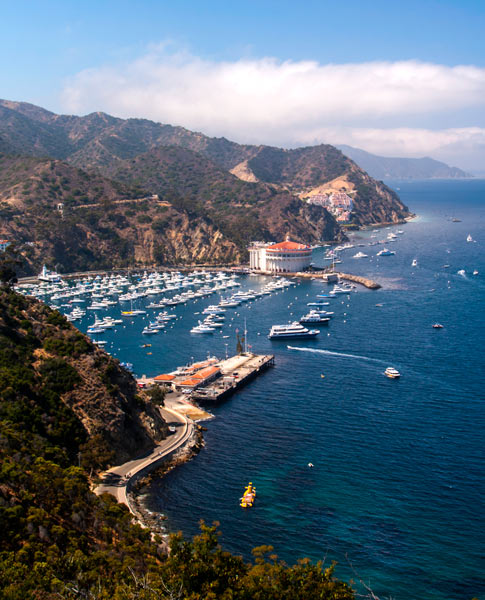
Take some time to enjoy the magnificent architecture of the Casino building.
Bring a snack and a (reusable!) bottle of fresh water. It’s important to stay hydrated and energized between dives.
Loop each dive. Instead of going out and back at the surface, descend to your maximum depth (always stay within your skill and comfort level) and then loop back toward the shallows for a slow ascent and safety stop.
Zigzag. While a straight line is suitable for navigation training, if you are comfortable, try using a zigzag or search pattern on your dive. This is an excellent opportunity to spot a giant sea bass. These massive creatures tend to congregate at the thermocline, which is typically located between 35 and 50 feet, depending on currents and the time of year.
Observe giant sea bass responsibly. From April to early fall, giant sea bass are frequent visitors. They are often spotted here in groups of three to six. It’s important to approach these huge animals slowly and gently — do not chase or harass them.
Explore the shallows. This dive site has some of the best shallow areas of any reef along the island’s shoreline, which make an excellent place to spend your safety stop. Bright orange garibaldis are particularly abundant (and bold) in these areas.
Don’t forget the deeper sand flats. They offer a distinct environment and ecosystem with unique marine life.
Be aware of currents. Although the underwater park is not typically known for strong currents, they can occasionally appear unexpectedly, usually moving from west to east. Be mindful of this and look out for signs of increased current. To avoid being pushed out into the boat lanes, try diving along with the current and then head back up into the shallows, where the current has less impact and you can use the rocks as handholds to move along.
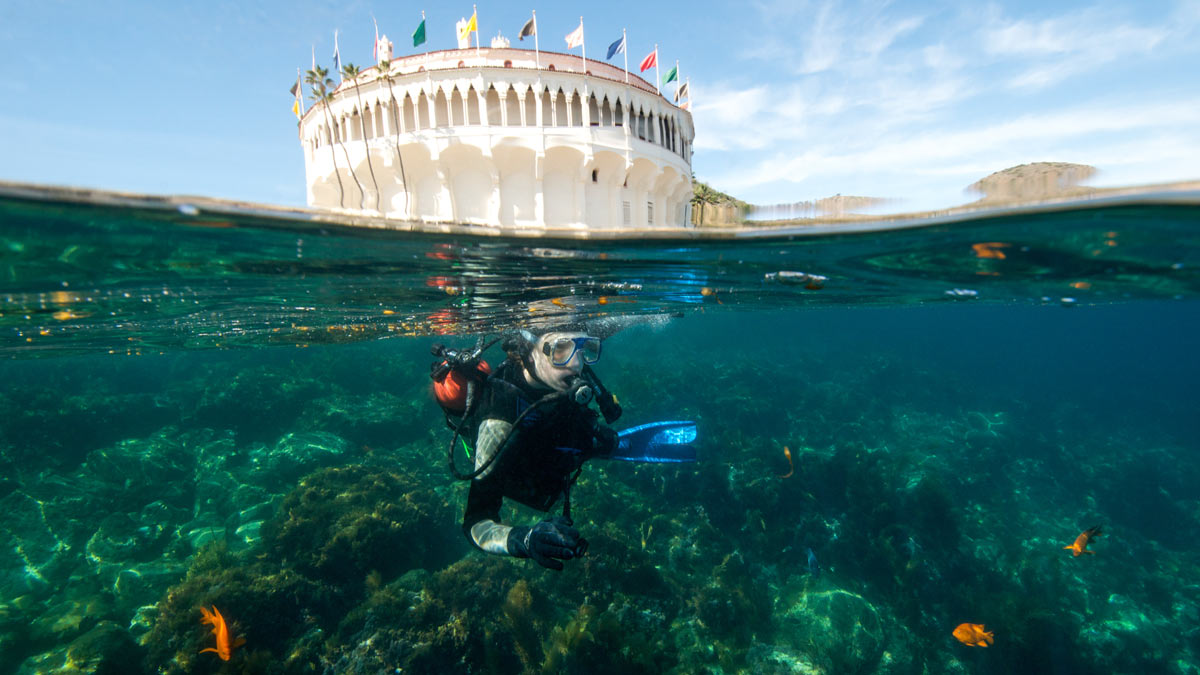
This dive site has some of the best shallow areas of any reef along the island’s shoreline. Adobe Stock photo.
Obey the rules of the road for entry and exit. The right side of the stairs is for entry, and the left is for exit. Anything else will cause traffic jams and hazards — and is inconsiderate.
Be mindful of others. The stairs leading to the water can get crowded, so it’s important to be courteous to those around you. Avoid making final checks and adjustments on the stairs and be sure your mask is properly defogged and in place before descending the stairs. Your fins should be the only equipment that requires final placement before entering the water.
Use safe water entry techniques. Make your way to where the water is about kneedeep, wait for the water to flow upward in a swell, and gently push off. The retreating swell will carry you smoothly away from the stairs and rocks. Avoid using giant strides — this entry method can be dangerous due to shallow rocks in the area.
Avoid the middle. Once in the water, it’s important to move away from the center entry area as quickly as possible to allow others to enter the water. Avoid congregating in that area unless you are part of a group with a predetermined meeting point at a buoy. The diving in the center area is lousy anyway, with poor water clarity from students and newbies stirring up the bottom.
Make use of the swell to exit. Use the reverse of the entry strategy to exit the water. Wait for a swell to gently push you up onto the steps.
Check your pride at the sea wall. The stairs are slippery. Crawl out and use the handrails.
Consider hiring a private guide. They can be expensive but especially valuable if you are new to the Avalon Underwater Park and California diving. A private guide can provide personalized instruction and take you to the best spots in the park, ensuring a safe and enjoyable diving experience.

